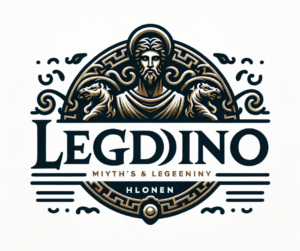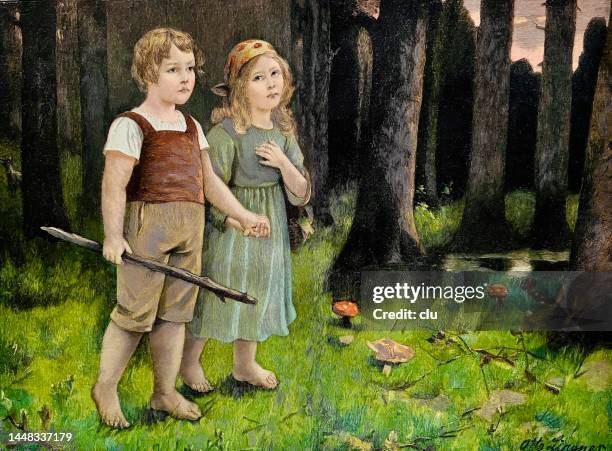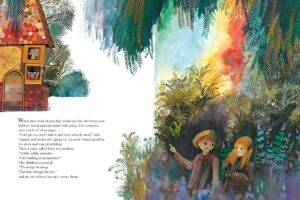Introduction
“Hansel and Gretel” is one of the most iconic fairy tales from the Brothers Grimm. Its dark and enchanting world has captivated readers for generations, weaving a narrative that balances the innocence of childhood with the sinister elements of a dark forest and a malevolent witch. In this article, we will delve deep into the story’s origins, themes, and lasting impact on literature and popular culture.
Origins of Hansel and Gretel
The tale of “Hansel and Gretel” was first published by the Brothers Grimm in 1812 as part of their collection, “Grimm’s Fairy Tales.” The story, like many of their other works, was rooted in European folklore, passed down orally through generations before being immortalized in print. The Grimm brothers aimed to preserve these stories, capturing the essence of the culture and moral lessons inherent in them.
Plot Summary
The story begins with Hansel and Gretel, two siblings who live with their father and stepmother. Due to a famine, the stepmother convinces their father to abandon the children in the forest to fend for themselves. Hansel, overhearing the plan, collects white pebbles to leave a trail back home. The first attempt at abandonment fails as the children follow the pebbles back home.
However, on the second attempt, Hansel and Gretel are left deeper in the forest, and Hansel uses breadcrumbs to mark the trail. Unfortunately, birds eat the breadcrumbs, leaving the children lost. They stumble upon a house made of candy and gingerbread, owned by a witch who lures them in with promises of food and shelter.
The witch’s true intent is to fatten Hansel and eat him. She enslaves Gretel to help with her plans. Through cleverness and bravery, Gretel pushes the witch into an oven, killing her and freeing themselves. The siblings find treasure in the witch’s house and return home, where they are reunited with their repentant father. The stepmother has died, and they live happily ever after.
Themes and Analysis
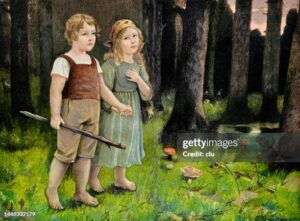
The Struggle for Survival
At its core, “Hansel and Gretel” is a tale about survival. The children’s abandonment highlights the dire circumstances faced by families during times of scarcity. This theme resonates with readers, illustrating the lengths to which people will go to survive.
Ingenuity and Bravery
Hansel and Gretel’s resourcefulness is a key element of the story. Hansel’s use of pebbles and breadcrumbs and Gretel’s cleverness in outwitting the witch emphasize the importance of quick thinking and bravery in overcoming adversity.
Good vs. Evil
The clear delineation between good and evil in the tale is typical of many fairy tales. The children, representing innocence and good, face the evil witch, symbolizing malevolence and greed. Their victory reinforces the moral that good ultimately triumphs over evil.
Family Dynamics
The story also explores complex family dynamics. The father’s weakness and the stepmother’s cruelty contrast sharply with the children’s bond and their mutual support. This portrayal of family relationships adds depth to the narrative, making it relatable and poignant.
Impact on Popular Culture
“Hansel and Gretel” has left an indelible mark on popular culture. The tale has been adapted into numerous films, books, and even operas. Each adaptation brings a new perspective, but the core story remains the same, demonstrating its timeless appeal.
Film Adaptations
From the classic 1954 animated film to the darker 2013 movie “Hansel & Gretel: Witch Hunters,” the story has been reimagined to suit various audiences. These adaptations often highlight different aspects of the tale, from its horror elements to its adventurous spirit.
Literary Influence
The tale has influenced countless writers and storytellers. Elements of “Hansel and Gretel” can be seen in modern literature, particularly in genres like fantasy and horror. The theme of children overcoming evil through wit and bravery is a common thread in many contemporary stories.
Operatic Renditions
Engelbert Humperdinck’s opera “Hänsel und Gretel,” first performed in 1893, remains a popular adaptation. Its success lies in its ability to blend the dark themes of the original tale with the enchanting music of classical opera.
Conclusion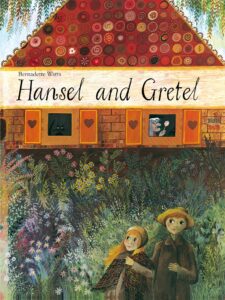
“Hansel and Gretel” remains one of the most enduring and beloved tales from the Brothers Grimm. Its exploration of dark themes, combined with the enchanting and hopeful elements, continues to captivate audiences worldwide. The story’s lessons on survival, ingenuity, and the triumph of good over evil resonate as strongly today as they did over two centuries ago. As we revisit this classic tale, we are reminded of the timeless power of storytelling and its ability to reflect the complexities of the human experience.
